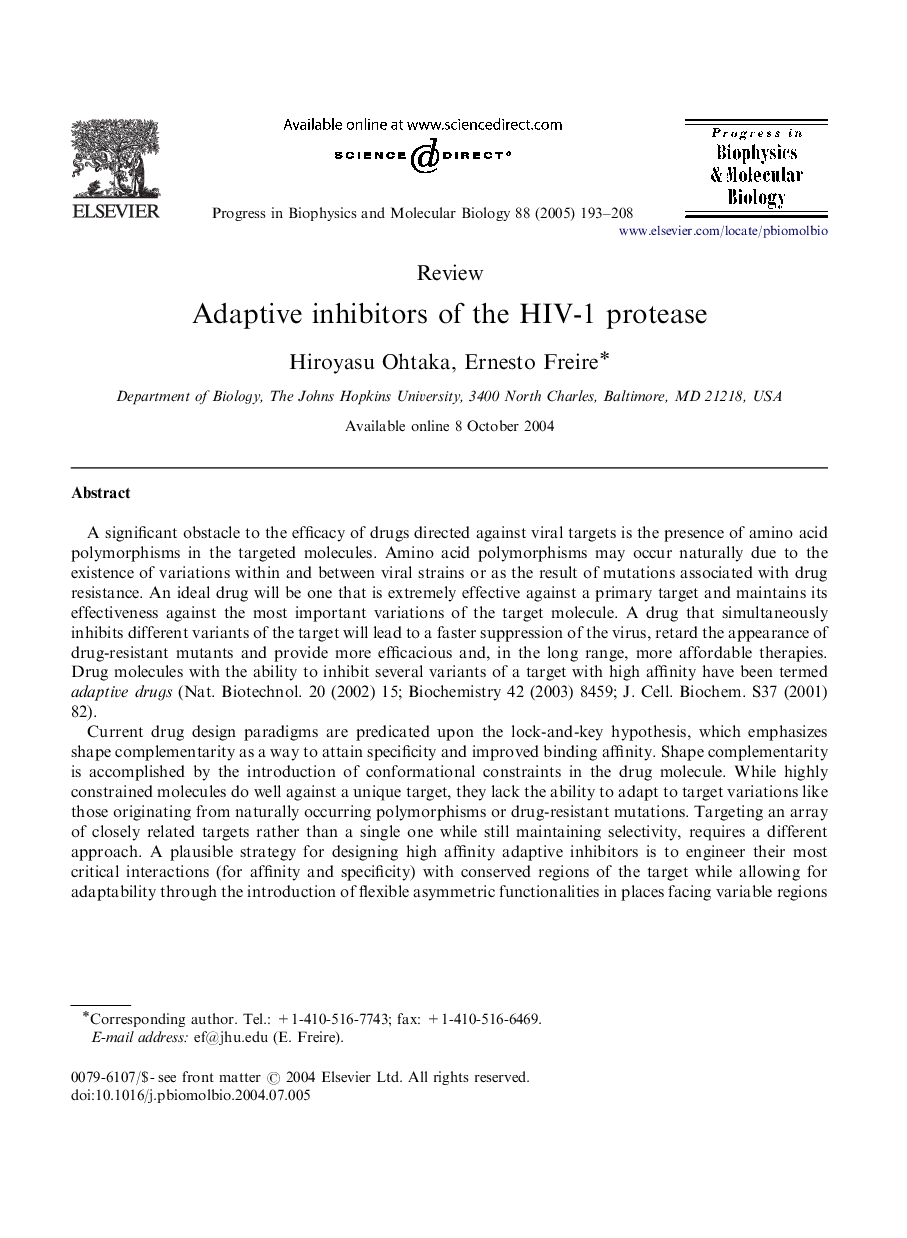| کد مقاله | کد نشریه | سال انتشار | مقاله انگلیسی | نسخه تمام متن |
|---|---|---|---|---|
| 10883728 | 1078622 | 2005 | 16 صفحه PDF | دانلود رایگان |
عنوان انگلیسی مقاله ISI
Adaptive inhibitors of the HIV-1 protease
دانلود مقاله + سفارش ترجمه
دانلود مقاله ISI انگلیسی
رایگان برای ایرانیان
کلمات کلیدی
موضوعات مرتبط
علوم زیستی و بیوفناوری
بیوشیمی، ژنتیک و زیست شناسی مولکولی
بیوفیزیک
پیش نمایش صفحه اول مقاله

چکیده انگلیسی
Current drug design paradigms are predicated upon the lock-and-key hypothesis, which emphasizes shape complementarity as a way to attain specificity and improved binding affinity. Shape complementarity is accomplished by the introduction of conformational constraints in the drug molecule. While highly constrained molecules do well against a unique target, they lack the ability to adapt to target variations like those originating from naturally occurring polymorphisms or drug-resistant mutations. Targeting an array of closely related targets rather than a single one while still maintaining selectivity, requires a different approach. A plausible strategy for designing high affinity adaptive inhibitors is to engineer their most critical interactions (for affinity and specificity) with conserved regions of the target while allowing for adaptability through the introduction of flexible asymmetric functionalities in places facing variable regions of the target. The fundamental thermodynamics and structural principles associated with this approach are discussed in this chapter.
ناشر
Database: Elsevier - ScienceDirect (ساینس دایرکت)
Journal: Progress in Biophysics and Molecular Biology - Volume 88, Issue 2, June 2005, Pages 193-208
Journal: Progress in Biophysics and Molecular Biology - Volume 88, Issue 2, June 2005, Pages 193-208
نویسندگان
Hiroyasu Ohtaka, Ernesto Freire,